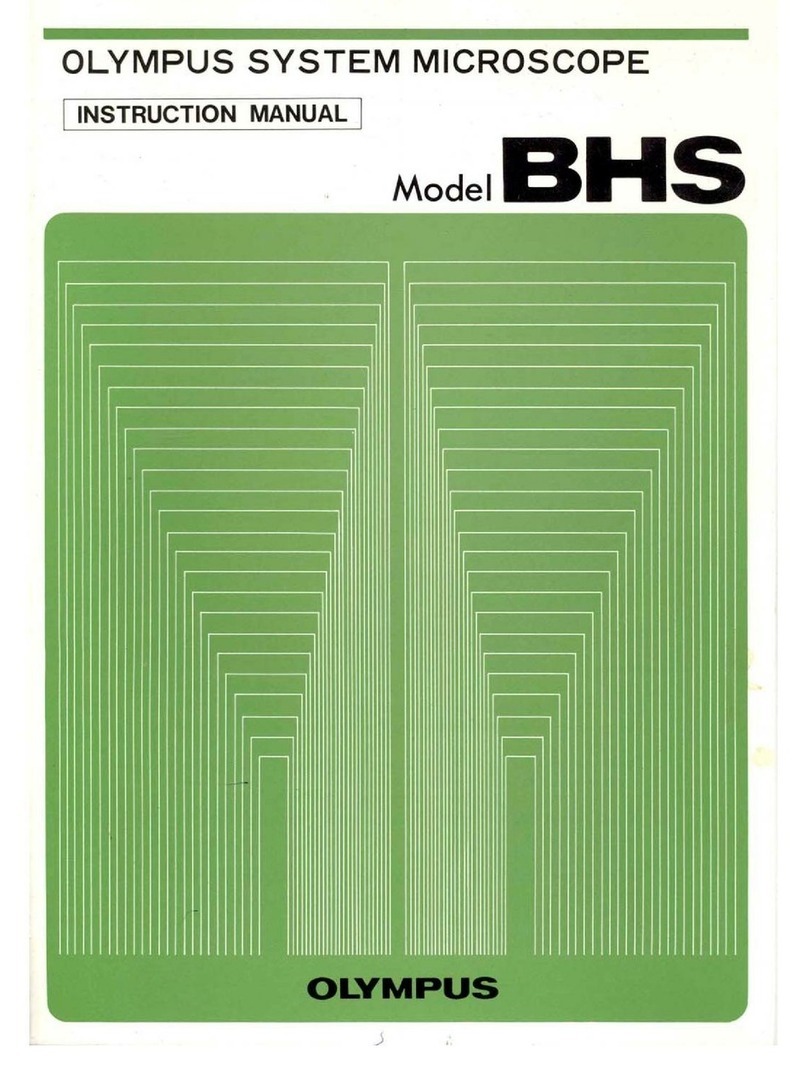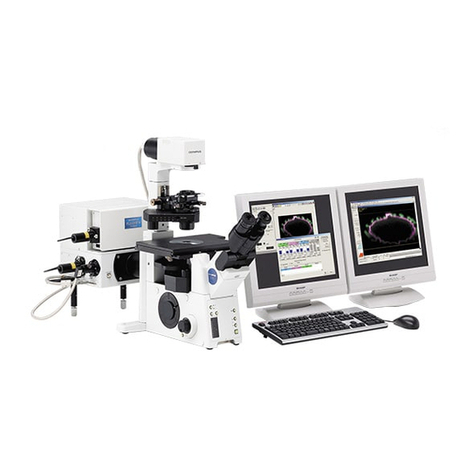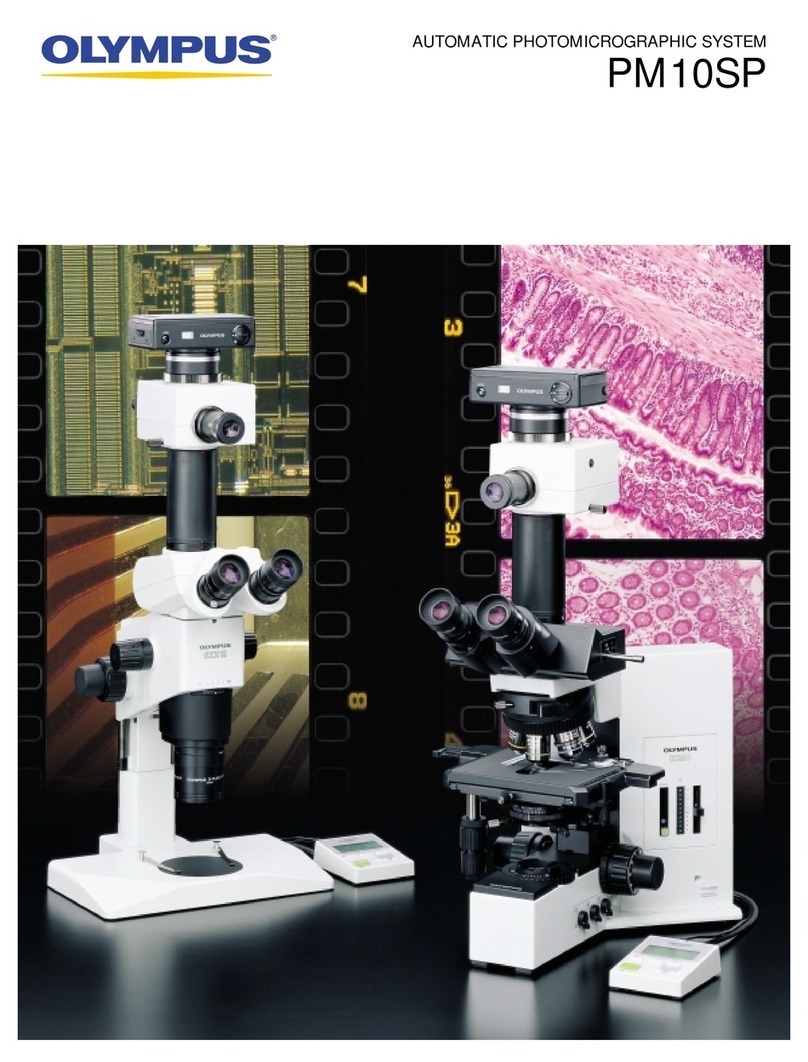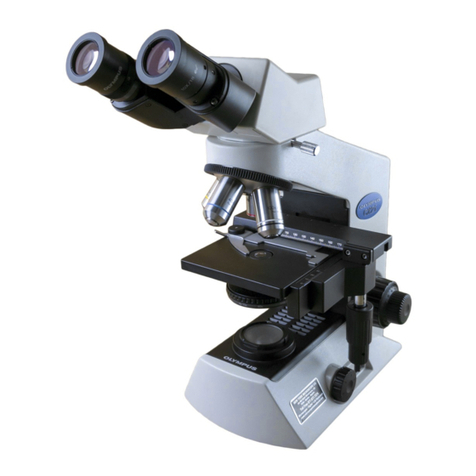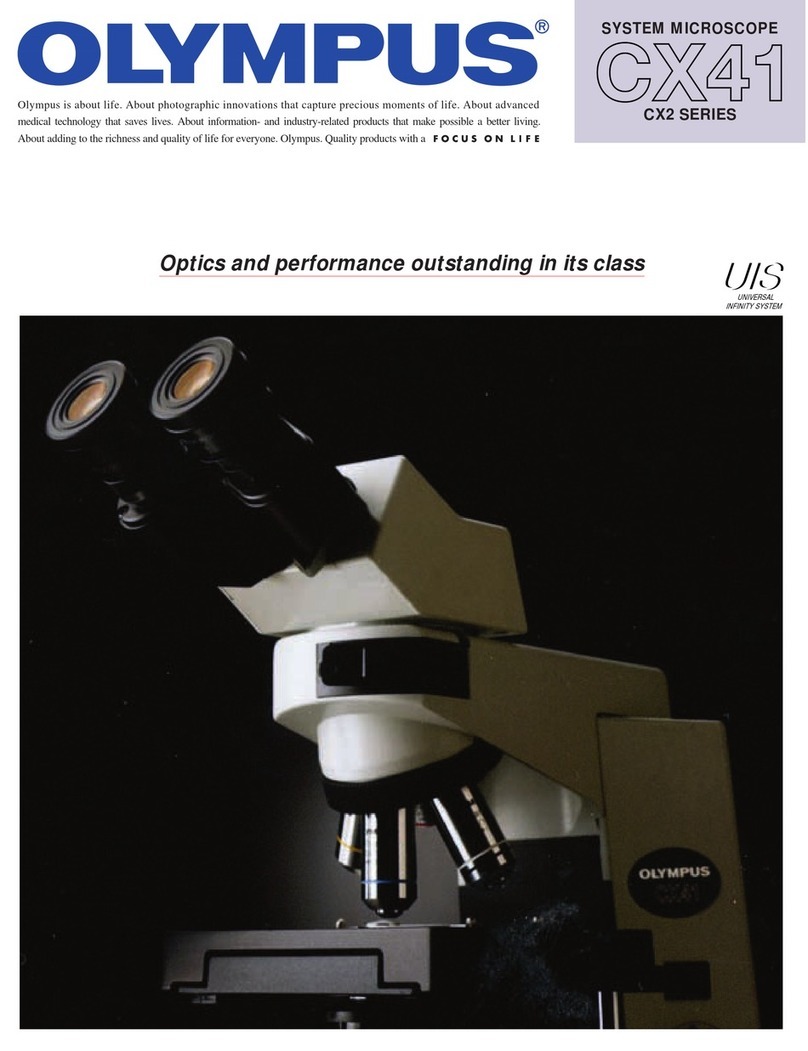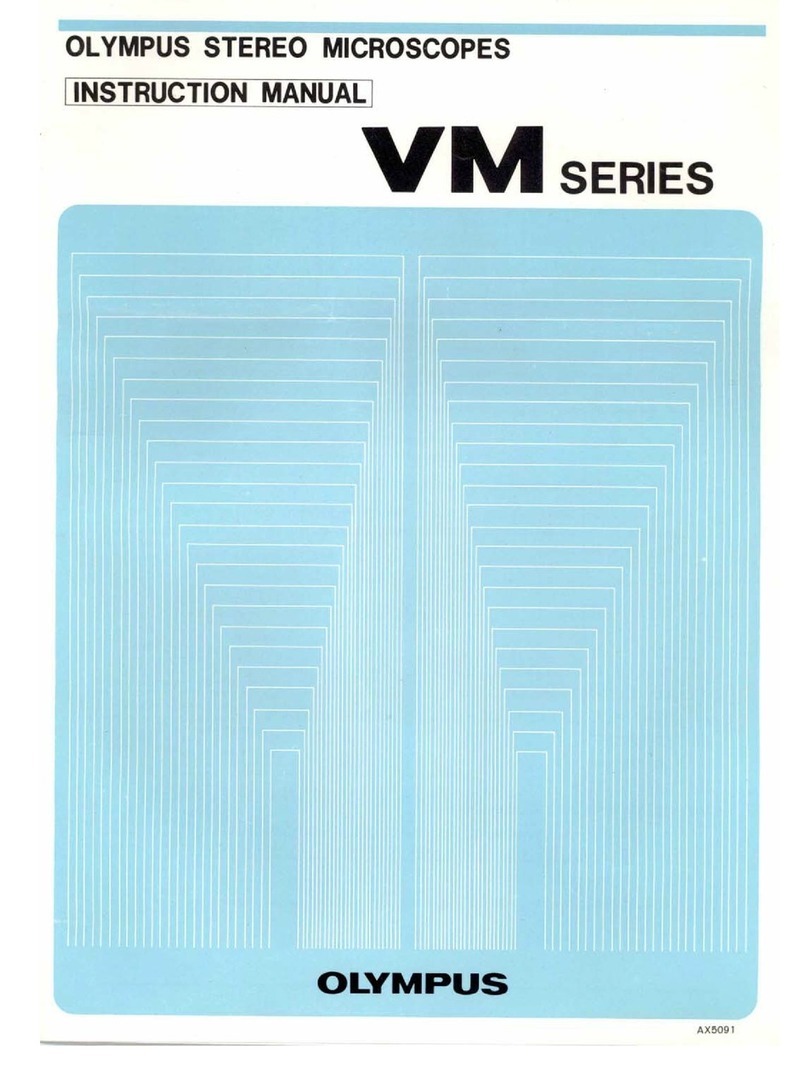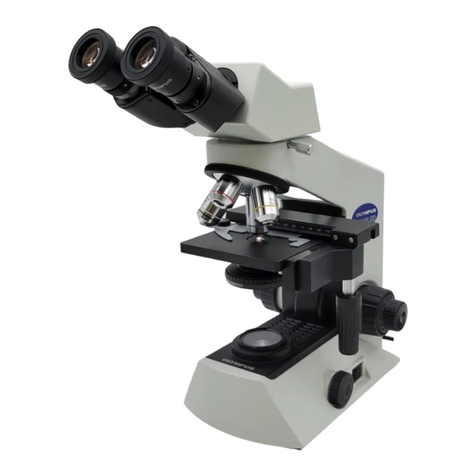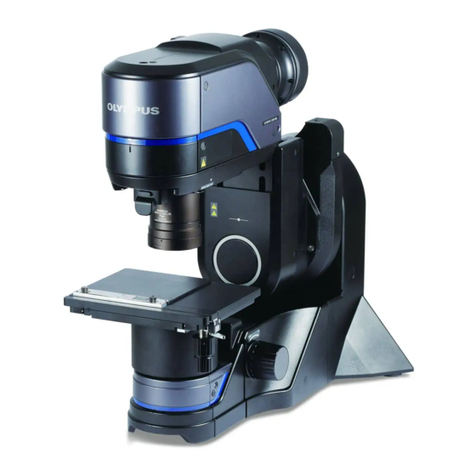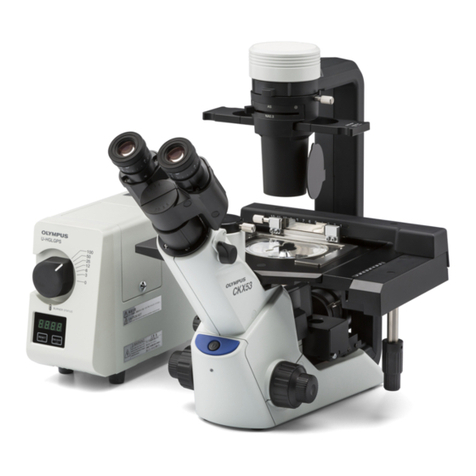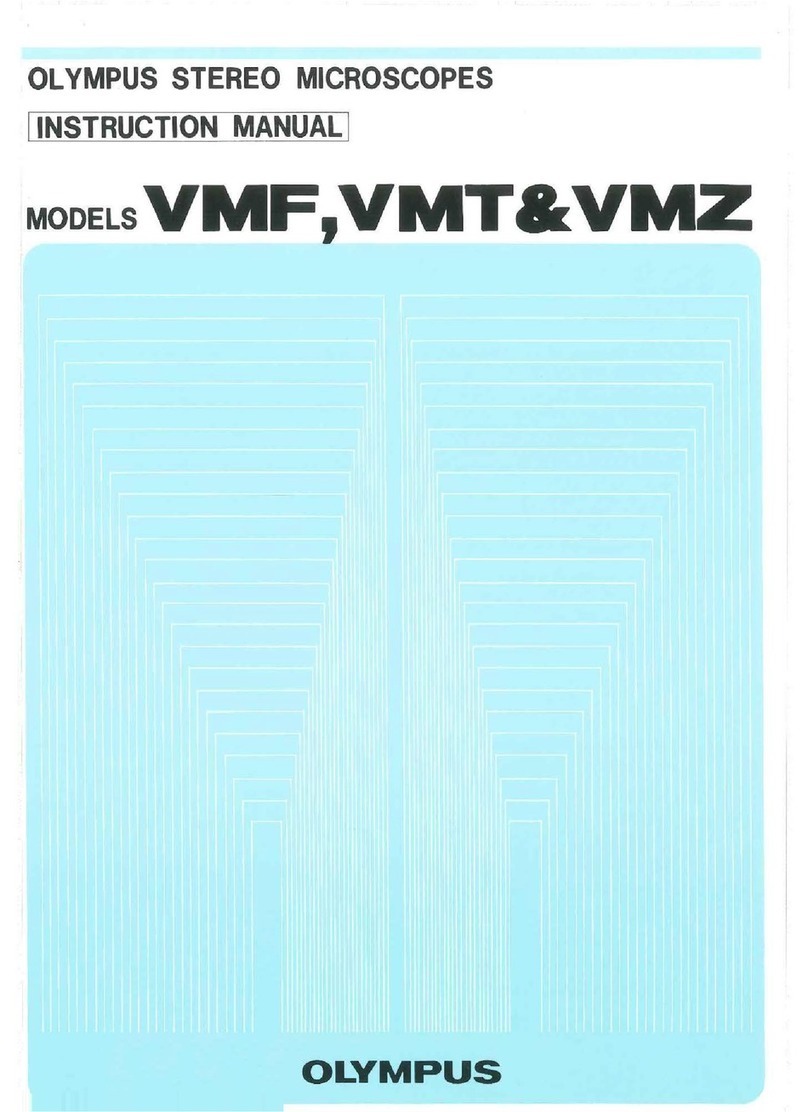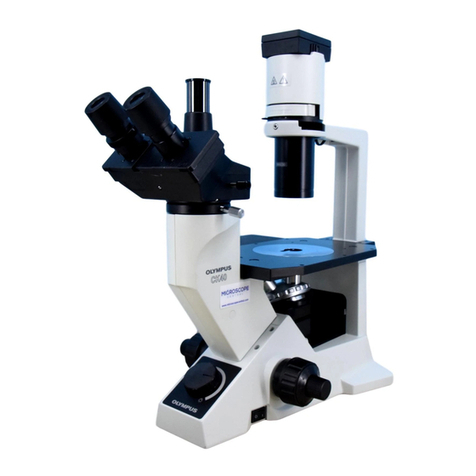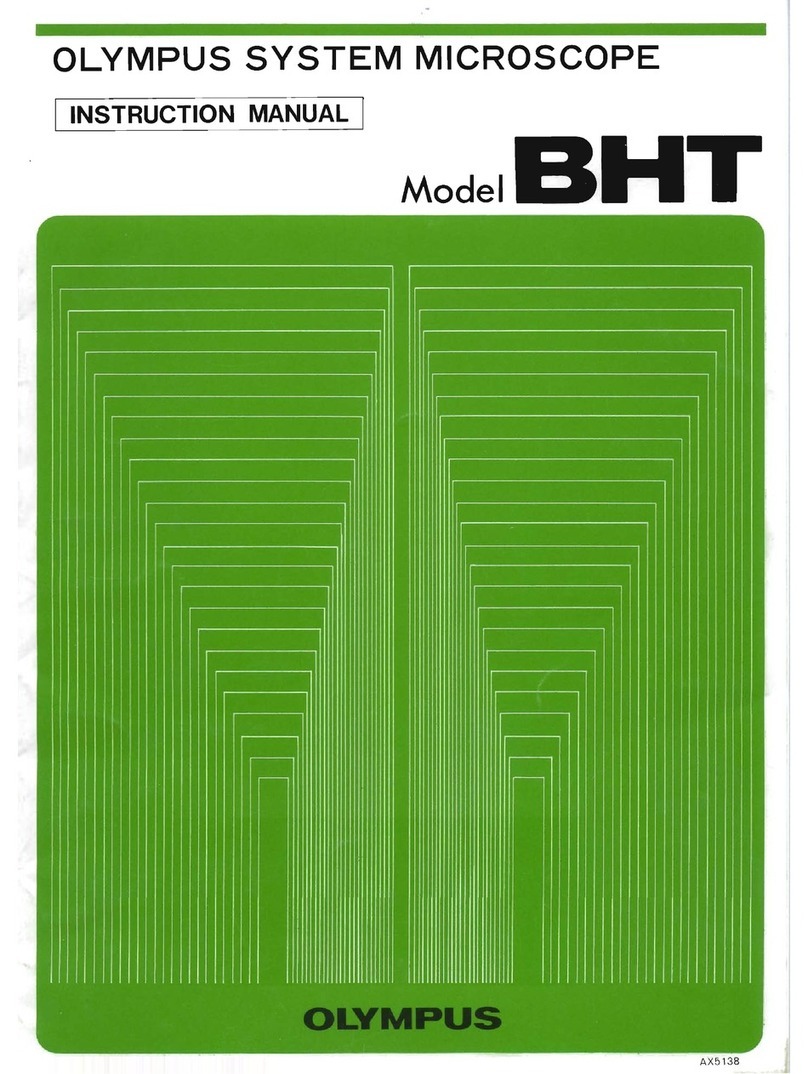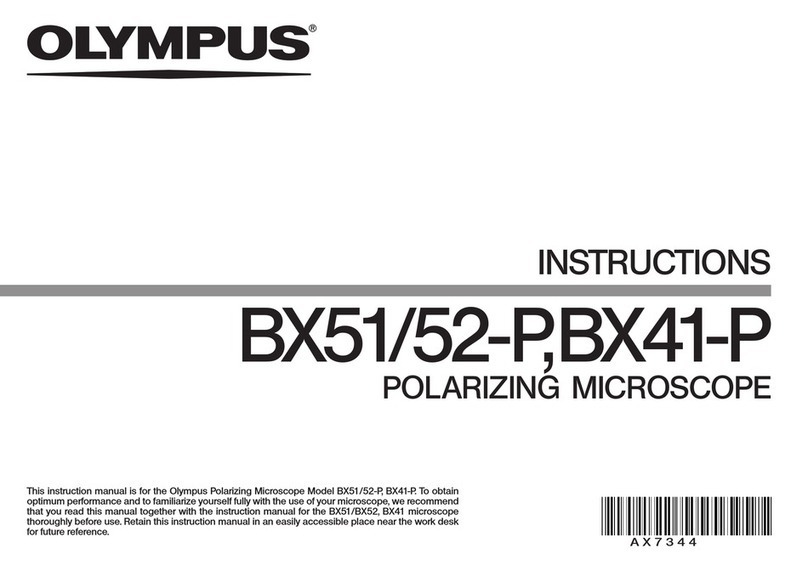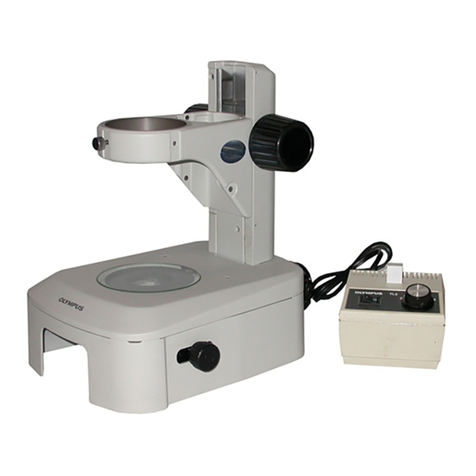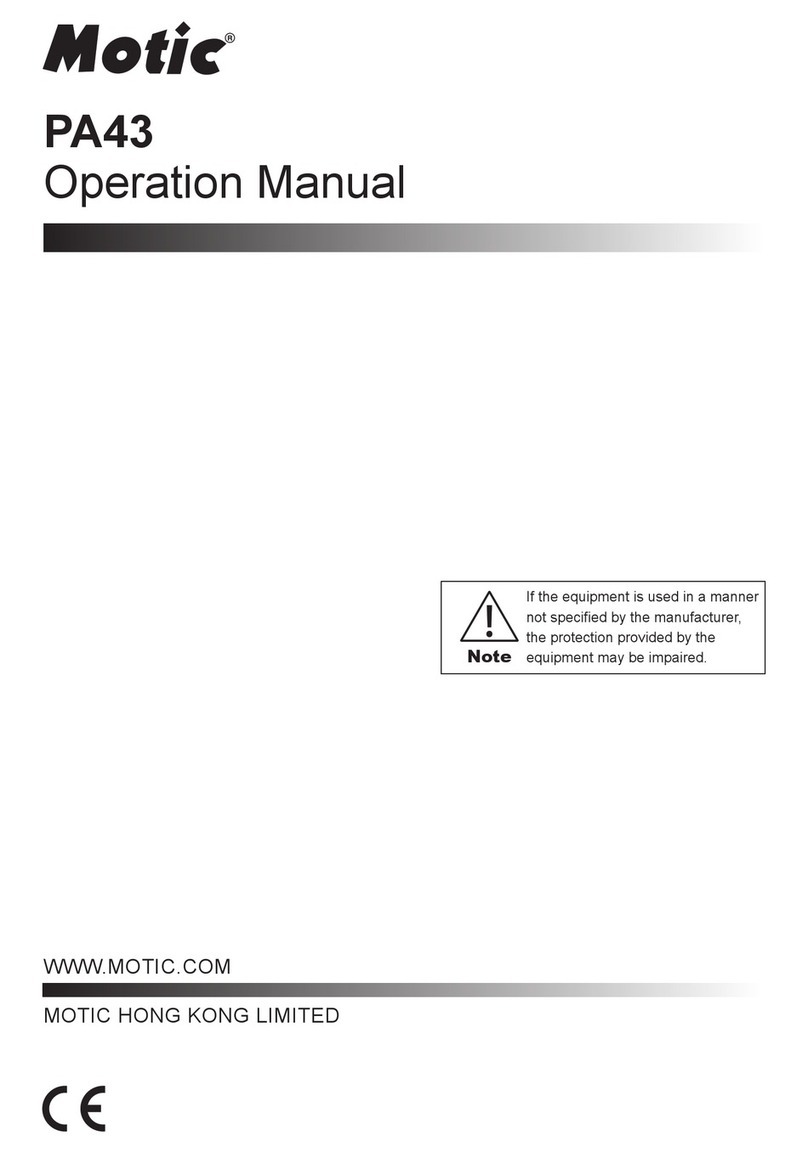
1
IMPORTANT
This microscope employs a UIS2 (UIS) (Universal Infinity System) optical design, and should be used only
with UIS2 (UIS) eyepieces, objectives and condensers for the BX2 series. (Some of the modules de-
signed for the BX series are also usable. For details, please consult Olympus or the latest catalogue.)
SAFETY PRECAUTIONS
1. Install the microscope on a sturdy, level table or bench so as not to
block the air vents on the underside of the base.
2. When moving the microscope, carefully carry it with the grasping part on
the arm as shown in Fig. 1 (Weight: approx. 15 kg).
#Damage to the microscope will occur if you grasp it by other parts
including the stage, lamp socket or tube.
#Before transporting the microscope, be sure to remove the speci-
men and eyepieces so that they will not drop. Also remove other
modules attached to the microscope because they increase the
system weight.
3. The surface of the lamp housing @ becomes very hot during operation.
Before installing the lamp housing, be sure to reserve enough space
around, particularly above, the lamp housing.
4. To avoid potential shock hazards and burns when replacing the light
bulb, set the main switch ² to “ ” (OFF) then disconnect the power
cord from the wall outlet in advance. Whenever you replace the bulb
during use or right after use, allow the lamp housing @ and bulb to cool
before touching (Fig. 2).
Fig. 1
Fig. 2
@
²Designated
halogen bulbs 12V100WHAL-L (PHILIPS 7724)
12V50WHAL-L (LIFE JC)
#The microscope also incorporates a fuse (this should be replaced
by the manufacturer or authorized agent).
5. Always use the power cord provided by Olympus. If no power cord is
provided, please select the proper power cord by referring to the chapter
“PROPER SELECTION OF THE POWER SUPPLY CORD” at the end of
this instruction manual. If the proper power cord is not used, product
safety and performance cannot be guaranteed.
6. Always ensure that the grounding terminal of the microscope and that
of the wall outlet are properly connected. If the equipment is not grounded,
Olympus can no longer warrant the electrical safety and performance of
the equipment.
7. Never insert metal objects, etc. into the air vents of the microscope frame
as this could result in electrical shock and personal injury.
8. The microscope system will be unstable when its height is increased by
attached accessories. Take proper measures so that the system will not
topple down.

